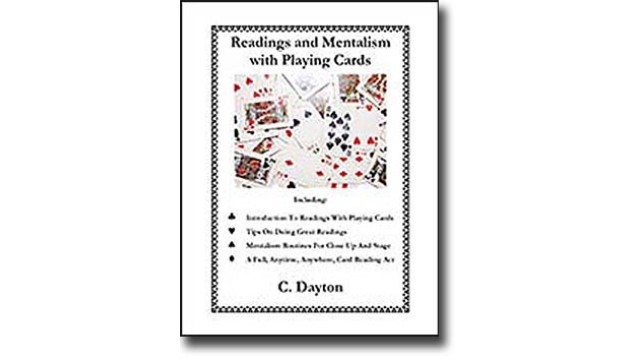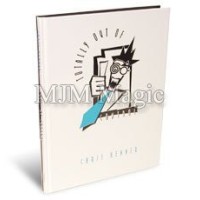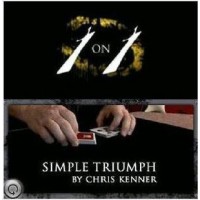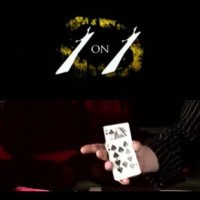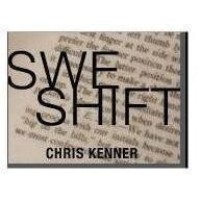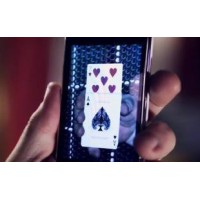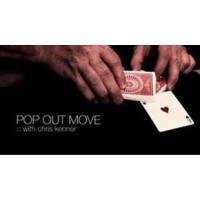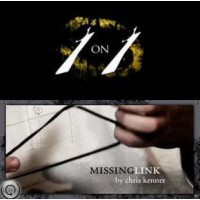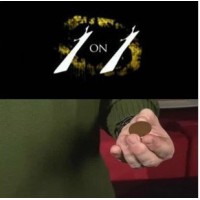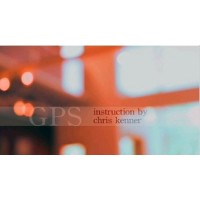Readings And Mentalism With Playing Cards by C. Dayton
- Product Code: C#22014
- Reward Points: 20
- Availability: In Stock
- $26.97
-
$4.99
- Price in reward points: 499
"I am excited, but tentative about presenting this. I'm excited because I really like doing readings with playing cards, they are one the very first things I learned to read, and because I really like the routines that I've written up. I'm tentative because I'm not entirely sure how they will be received. Everything here is simple and I'm sure that others are doing similar things. For those who are not doing similar things, I am afraid that the simplicity of the reading system and the mentalism routines will cause them to be overlooked. On the other hand, maybe it's better if they are." |
I have to admit that I'm a bit conflicted about C. Dayton's last remark. Let me explain...
On the one hand, the wide-spread acceptance by many mentalists of the conventional "No Playing Cards in Mentalism Rule" means that those who ignore it (and know how to effectively present convincing card routines) are among a select few -- which sets them apart from the rest of the pack. From this standpoint, the fewer performers who buy C. Dayton's book, the better.
On the other hand, the information in this book will undoubtedly improve just about any performer's presentations of readings and mentalism, and that, in turn, benefits everyone -- performers and their audiences.
As C. Dayton explains, one of the strongest arguments for the use of playing cards in mentalism is their being readily available. Presented with the frightening "Airline Lost My Luggage" scenario, having a deck of cards in your pocket means that you can easily perform a 20+ minute show for any size group, and then present readings afterwards. With that idea in mind, C. Dayton includes a number of routines, including a walk-around presentation, a card reading act, and his version of Any Card At Any Number.
In addition to the mentalism routines, C. Dayton shares his playing card reading system, which is based on a simple and easy-to-learn interpretation of the suits and values of the deck. Based on years of experience, his approach is extremely practical and flexible, and the four spreads he describes in detail are perfect for just about any reading situation you may find yourself in. I especially like his direct methods of answering Yes/No questions and timing predictions.
The 43-page e-book includes...
| - Why Cards? - Tex Ritter's Deck of Cards - An easy-to-learn card reading system - C. Dayton's Favorite Spreads - The Double Lift Spread - How to put it all together - How to answer Yes/No questions - How to time predictions - C. Dayton's "Three Secrets for Readings" - A Walk-Around Card Reading Routine - A Complete Card Reading Act - Two essential -- but easy -- sleights - Bonus routine: A.C.A.A.N.R.W.A.L.A |
Ultimately, of course, the use of playing cards in your presentations is a personal decision based on your own vision of mentalism and your performing persona.
Reviews (0)
Related Products
Seed Of Doubt by Fraser Parker
I LOVE this. Seed of doubt is great! I'm yet to get to the subtleties but I will 1,000,000% use this..
$2.99 $7.99
Monarch by Avi Yap
One of the most anticipated project release by Avi Yap is finally here. Wait... Who is Avi? Avi is a..
$1.99 $5.99
Blink Vanish by Sansminds
There are numerous classic card effects involving a torn corner. There's only one thing missing -- a..
$1.99 $5.99
Envel-Epic by Walter Valle
Imagine you are in a Casino.A spectator thinks of a roulette numberAnother spectator rolls 2 diceAnd..
$1.99 $6.99
The Classics of Magic by Aldo Colombini
About Classics of Magic, Aldo says, "This is some of the best magic I've come up with."These ar..
$1.99 $5.99
Recommend
Unicoin by Chris Kenner
Theory11 - Chris Kenner - Unicoin Simple magic of a unique approach, four coins , one by one from..
$1.69 $3.98
Totally Out Of Control by Chris Kenner
Chris Kenner - Totally Out of ControlPDFBack in Print!Chris Kenner's wacky, off the wall, and insane..
$1.69 $5.89
Sloppy Shuffle Triumph by Chris Kenner
Theory11 - Chris Kenner - Sloppy Shuffle Triumph Released: 2008 Video Size : 131MB Video length :..
$1.69 $3.98
Slipshot by Chris Kenner
4A Theory11 - Chris Kenner - Slipshot Learn three different pop-out move variations - all utilizin..
$1.99 $4.99
Simple Triumph by Chris Kenner
Theory11 - Chris Kenner - Simple Triumph Video Demo: http://www.theory11.com/tricks/simple-triump..
$1.69 $3.98
Shifty by Chris Kenner
practices elevator Theory11 - Chris Kenner - Shifty Totally improvised super poker magic ! Video ..
$1.99 $4.99
Schwing by Chris Kenner
Theory11 - Chris Kenner - Schwing Please copy the following address to open the IE 's browser : h..
$1.99 $4.99
S.W.E.Shift by Chris Kenner
Theory11 - Chris Kenner - SWEShift The following effects demo copy to IE 's browser to open :..
$1.99 $4.99
Rising Card App by Chris Kenner
Ideas or licensing Theory11 - Chris Kenner - Rising Card App Mobile version Need IPHONE o..
$1.99 $4.99
Private Lecture by Chris Kenner
Private magic lectures Chris Kenner - Private Lecture Chris Kenner 's early private lecture ! Chris..
$1.99 $4.99
Pop Out Move by Chris Kenner
Theory11 - Chris Kenner - Pop Out Move Official Description :http://www.theory11.com/1on1/#new/pag..
$1.99 $4.99
Missing Link by Chris Kenner
Theory11 - Chris Kenner - Missing Link Released: 2008 Video Size : 128MB Video length : 00: 11:45..
$1.69 $3.98
Invisible Reverse by Chris Kenner
Theory11 - Chris Kenner - Invisible Reverse Remember the audience pick a card , then put the car..
$1.99 $4.99
Hellbound Spellbound by Chris Kenner
Theory11 - Chris Kenner - Hellbound Spellbound Released: 2008 Video size : 64.85MB Video leng..
$1.99 $4.99
Gps by Chris Kenner
Theory11 - Chris Kenner - GPS Chris Kenner 's wife to be his audience. Cards to find the audienc..
$1.69 $3.98
Five Speed by Chris Kenner
Poker magic trick Theory11 - Chris Kenner - Five Speed Released: 2008 Video Size : 119.75MB Vid..
$1.99 $4.99

